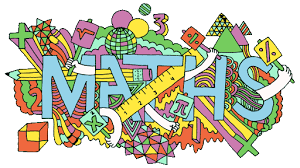Hello Everyone!
Wow! We have done a lot during our first two months, and we are working away on projects to finish our large unit on STRUCTURE.
Structure of Numbers – Math!
I have been very impressed with everyone’s critical thinking, enthusiasm, and practice of independent time-management skills during our open math tasks about structure of numbers. Thank you for your hard work! If you are not done by end of day tomorrow, Nov. 2nd, then please visit “Ms. D’s office” to talk about prioritizing which tasks are the most important to finish.
If you are all done, as some of you are, then you will get to move on to your mini math project of creating your own game that practices a math skill. I will make a separate post with the requirements for you tomorrow.
We will also spend some time in class debriefing from our tasks, going over the key ideas from the unit discovered through your activities and group discussions.
By the way, thank you again to all of the 11 students who came and volunteered to lead math games for the Suncrest Family Math Games Night! It was an amazing event and your help and leadership were much appreciated!
Your World!
I can see some very unique worlds being created, and everyone is making models and written work to explain their worlds in different ways — cardboard models, Book Creator booklets, written explanations on MS Word, and other creative methods. I look forward to seeing how you explain the parts of your world through both writing and a visual display. Make sure to check criteria we discussed on the blog. Extended deadline — Nov. 7th, Wed.
Form = Function!
On our unit board, you can see orange stickies with examples of how we discussed the concept of STRUCTURE throughout our inquiries across subject areas. I also asked everyone to identify an object or organism of interest to them that they could use to discuss how form follows function. You may want to decide to do the animal you chose from before, as you can talk about how form follows function in terms of habitat, anatomy, etc., and you have already completed research on the topic, too! You will make a PowerPoint showing how form follows function for the object or organism and present it to the class. You can work with a partner, too, if you want to. We will talk about criteria in class.
French!
Students have continued their lessons on Duolingo, and I linked many new assignments to their accounts today to complete over the next two weeks. Also, students can earn extra XL points for their Duolingo account by doing 10 minutes of practice each day. Some students are working independently and at their own pace, ahead of the assignments I am giving, as they have previous experience with French, and that is okay!
More Information, Upcoming Events and New Unit!
Next week, we have a Diwali assembly, a Cup Stacking activity as a whole school, and the Remembrance Day Assembly. Our class is currently making mixed media art to highlight the symbol of the poppy, and everyone is learning how to work with new materials, about elements and principles of art such as perspective, and how to use tools like acrylic paint and brushes effectively. Division 5 will also be singing for the assembly. Please wear dark pants and a white shirt for the assembly on Friday.
Everyone has prepared some talking points for their SKILL SHARE, during which they will teach others about a topic they are familiar with, so we will set up dates to do the sharing soon.
Thank you to the entire class for their leadership helping to deliver hot lunches to all of the classes in the school! You have been doing a great job!
We continue to talk about the core competencies, and we watched a great video today about the skills needed in today’s “Human Economy”. Please check it out here!
On November 19th, we will have a set of ozobots in the classroom to work with, so I look forward to another opportunity for students to do the coding we learned about at Science World!
Some students have begun using their Google Docs account from school. This account does not have email or Google Chat, so if students are using those things, they are on a personal account, which is not something I recommend for students this age. We use Google Docs to save our work and to be able to work on projects between home and school.
Thank you for following my TWITTER feed that has photos of work we do and events from school, as well as links to education articles or interesting things students and parents may want to know about! Please note it is my professional account, so not every post will be about Division 5, but all posts are relevant to education and critical thinking around our units and curriculum.
Keep checking the EPORTS for student reflections. We try to do one per week, and then I gradually read through them and comment as soon as I am able during the following week.
Caribou Math Test — Not all students are interested in continuing with the monthly Caribou Tests. The test is 100% optional, and I do not look at results for evaluating students. If anyone wants to continue, they can. Grade four students are free. Grade 5 students need to purchase their code. Steps to do so will be sent in email. Next test is on Nov. 14/15.
Our new unit will focus on perspective and problem-solving! More on that soon!
Have a great evening!
Ms. D



